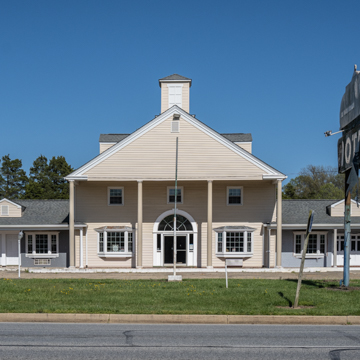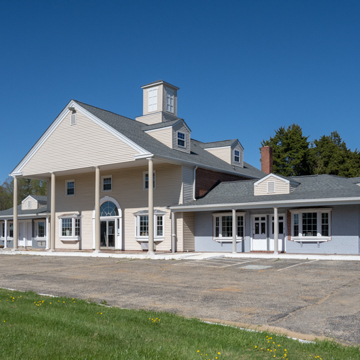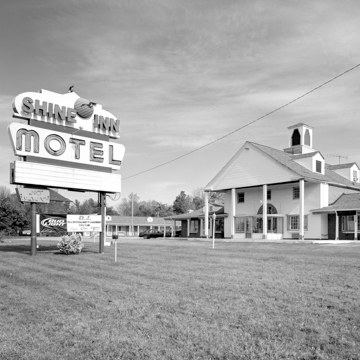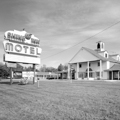The extension of U.S. 301 across the Potomac River into Virginia via the Governor Harry W. Nice Bridge in 1940 and widening into a divided highway in the mid-1950s transformed a local road into a major north-south route, inspiring construction of many motels. Built as the White House Motel, this complex is representative of roadside lodging found along U.S. 301. It includes a two-and-a-half-story central section housing the office, lobby, and restaurant with a columned porch and cupola. Two original low wings of motel rooms have entrances sheltered by an overhanging porch roof and parking spaces directly in front. As was typical for motel construction in the period, the design was economical, with minimal decoration other than an enormous free-standing sign advertising the establishment. Other surviving mid-twentieth-century motels nearby are the Bel Alton (1952; 9259 Crain Highway) and the Lafayette (1945), now the Relax Inn at 9340 Crain.
Roadside motel construction was also motivated by legalization of slot machine gambling in Charles County in 1949. In this period only Nevada and four counties in Maryland—Charles, St. Mary’s, Calvert, and Anne Arundel—had legal slot machine gambling. The lively nightlife and restaurant scene with slot machines in almost every establishment earned the MD 301 corridor the nickname Little Vegas. A slot machine ban in 1968 brought to a close southern Maryland’s era as a gambling travel destination.







